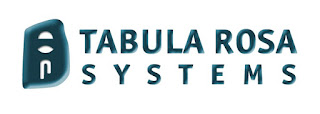


|
Risk Map
|
from whatis.net
A risk map, also known as a risk heat map, is a data
visualization tool for communicating specific risks an organization faces. A
risk map helps companies identify and prioritize the risks associated with
their business.
The goal of a risk map is to improve an organization's
understanding of its risk profile and appetite, clarify thinking on the
nature and impact of risks, and improve the organization's risk assessment
model. In the enterprise, a risk map is often presented as a two-dimensional
matrix. For example, the likelihood a risk will occur may be plotted on the
x-axis, while the impact of the same risk is plotted on the y-axis.
A risk map is considered a critical component of enterprise
risk management because it helps identify risks that need more attention.
Identified risks that fall in the high-frequency and high-severity section
can then be made a priority by organizations. If the organization is
dispersed geographically and certain risks are associated with certain
geographical areas, risks might be illustrated with a heat map, using color
to illustrate the levels of risk to which individual branch offices are
exposed. Read more...
|
|
|
++++++++++++++++++++++++
Good Netiquette
And A Green Internet To All! =====================================================================
Tabula Rosa Systems - Tabula Rosa
Systems (TRS) is dedicated to providing Best of Breed Technology and
Best of Class Professional Services to our Clients. We have a portfolio of products which we
have selected for their capabilities, viability and value. TRS provides
product, design, implementation and support services on all products that we
represent. Additionally, TRS provides expertise in Network Analysis, eBusiness
Application Profiling, ePolicy and eBusiness Troubleshooting.
We can be contacted at:
sales@tabularosa.net
or 609 818 1802.
===============================================================
In addition to
this blog, Netiquette IQ has a
website with great assets which are being added to on a regular basis. I have
authored the premiere book on Netiquette, “Netiquette IQ - A Comprehensive
Guide to Improve, Enhance and Add Power to Your Email". My new book,
“You’re Hired! Super Charge Your Email Skills in 60 Minutes. . . And Get That
Job!” has just been published and will be followed by a trilogy of books on
Netiquette for young people. You can view my profile, reviews of the book and
content excerpts at:
Anyone who
would like to review the book and have it posted on my blog or website, please
contact me paul@netiquetteiq.com.
In
addition to this blog, I maintain a radio show on BlogtalkRadio and an online newsletter via paper.li.I have established
Netiquette discussion groups with Linkedin and Yahoo. I am also a member of the
International Business Etiquette and Protocol Group and Minding Manners among
others. I regularly consult for the Gerson Lehrman Group, a worldwide network
of subject matter experts and I have been contributing to the blogs Everything Email and emailmonday . My work has appeared in numerous
publications and I have presented to groups such as The Breakfast Club of
NJ
and PSG of Mercer County


